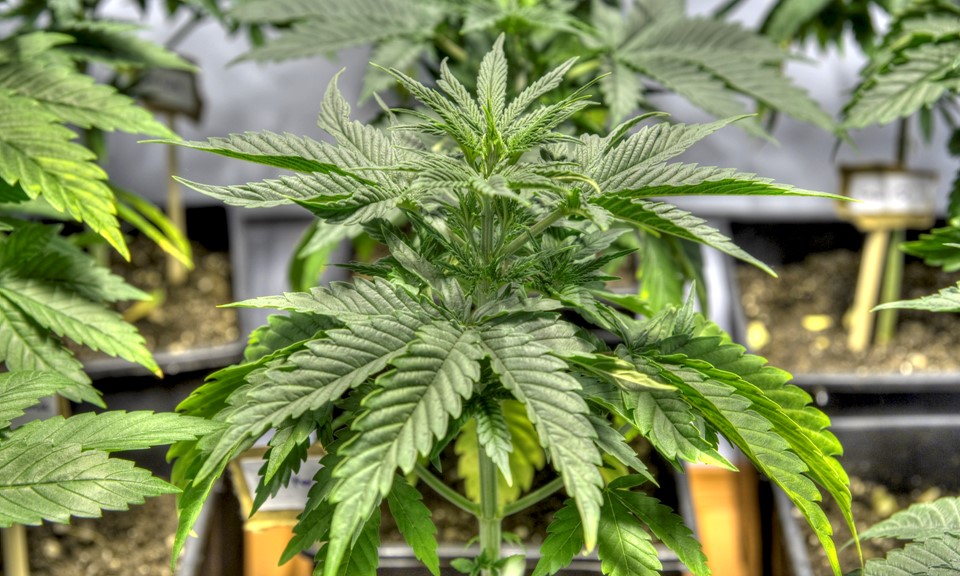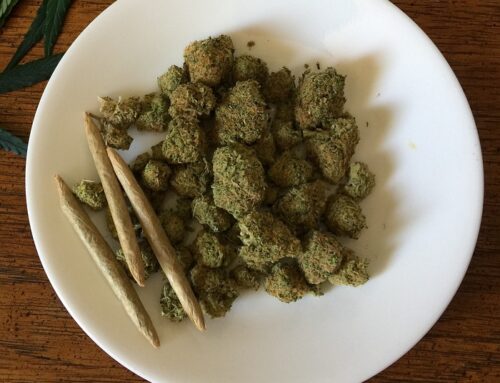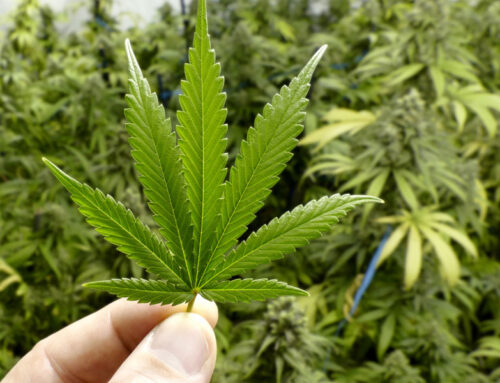Deep Water Culture Hydroponics
Before starting your cannabis grow, you must decide if you want an indoor growing system or an outdoor growing system. When it comes to indoor growing mediums, DWC, or deep water culture, is a type of hydroponic growing method where each plant’s roots are growing in a tub of water.
One of the main benefits of a DWC system is that it promotes faster growth. Unlike growing cannabis in soil, roots grown in DWC don’t need to expend energy to search for what the plant needs; nutrients are easily accessible by the roots.
Plants have an unlimited supply of oxygen because of added oxygen from the air stone in the reservoir. Since the plant is spending less energy finding what it needs to grow, it channels that energy to plant growth. In addition, with proper guidance and a quality set up, DWC takes less time to maintain than an average grow.
When implementing a DWC system, a bubbler bucket reservoir system is recommended.
A bubbler bucket reservoir is a simple system that suspends the plants roots in a highly oxygenated nutrient solution. The roots are submerged in the nutrient-water solution in the bucket and are then replenished, as needed.
The most important growing tip is to check on your cannabis plants daily. As with many processes, the easiest way to fix a problem is in the beginning stages! If something is wrong with your plant in a DWC system, your first step in remedying your plant should always be to change out the reservoir. It is common for root rot to occur when roots are consistently in water, therefore, it is imperative to establish a preventative routine of changing out the reservoir every seven days. Adding beneficial bacteria to the reservoir is also effective in avoiding and combating root rot.
When growing from seeds in DWC, use each reservoir port (or net cup) to vegetate, then pick the strongest looking females to continue growing.
Keeping air and water temperatures under control are also very important measures to take. Air temperature should be 75-85°F when the lights are on and will drop by 10 degrees when the lights are off. Water temperature should remain at a constant temperature at all times. Your empty portholes can be used to change out the reservoir water by using a pump, allowing you to easily inspect what’s going on inside.
A common mistake to avoid when growing with DWC is not checking the pH levels of the water. This is important for any grow! Dirty reservoirs or not using an aerator 24/7 are two additional crucial mistakes, as roots must have excessive oxygen so they don’t drown. While some people like to maintain a completely sterile reservoir with just nutrients and water and no traces of anything alive, there are some good sources of beneficial bacteria that can be added. Bad bacteria is obviously, bad, but we wanted to emphasize the possibility of bacteria that can benefit your grow. To avoid potentially harmful bacteria, be proactive about changing the reservoir water.
In addition, having too many plants in one reservoir can lead to problems such as white powdery mildew. Don’t cramp your plants, instead, we recommend growing one plant per reservoir to allow the roots to spread out and give the leaves and buds more space.
Setting up a water transfer pump for this task can speed up the process. For best results, learn how to flush your cannabis plants.
Flushing your plants by removing any nutrients and salts improves the quality and taste of your final product. By simply draining your bubbler bucket reservoir and adding plain (pH neutral) water for two-three days before harvest, the plant will use all its existing nutrients contained in the stems, leaves and buds.
Growing Cannabis with Coco Coir
Coco coir is another great growing method, especially for beginners. It provides the ease of soil gardening with the rapid growth of hydroponics by using fibrous coconut husks instead of a potting mix. Compared to just soil growing, it absorbs moisture much easier, allowing plants to take up more nutrients and retain oxygen more efficiently because of its lighter texture. It also provides a forgiving buffer by reducing shock stress when human errors are made, such as adding too many nutrients, a common mistake.
Coco is much easier to flush than DWC because you aren’t changing an entire water reservoir. In fact, watering coco coir is very versatile. You can use a flood and drain hydroponic system, which is when the nutrient system temporarily floods from beneath the plant, controlled by a pump and timer, instead of dripping from above like most hydroponic systems. You can also use the most recognized top water to waste system, which is simply taking a water pail and watering your plant until water comes out of the bottom of the pot.
When growing cannabis with coco, good quality coco coir makes an immense difference, especially regarding root development. For beginner growers, a three-to-one coco to perlite mixture is recommended as it requires less watering frequency and holds moisture and nutrients better.
For more experienced growers, a one-to-one coco to perlite ratio is recommended as you are able to water more frequently, giving the plant more nutrient uptake and allowing more aggressive root growth.
With coco, water around the outside of the pot in early stages of growth to encourage roots to reach out and fill up the entire container.
Some common mistakes can occur when growing with coco if a grower allows the coco to get too dry, as the mixture dries quickly. Not checking the pH of the nutrient-water solution and not flushing on a consistent basis are also critical errors, as you are using more nutrients with coco and the excess residual nutrients can cause common nutrient deficiency symptoms.
It’s also very important to use Cal-Mag, or Calcium and Magnesium, in your coco growing medium. Calcium plays a direct role in a plant’s root development, nutrient uptake and protein synthesis. Magnesium is an essential part of chlorophyll production, helping your plants with photosynthesis, as well as aiding in the synthesis of sugars and proteins. Together, the correct amount of magnesium and calcium will help keep your cannabis plant healthy.
Outdoor Growing
Outdoor soil growing is a common gardening technique that most people with house plants or vegetable gardens are familiar with. Using techniques such as top-fed watering, deep irrigation or wicks are all viable methods to water your plants. You can either use organic, composted soil, or store-bought soil with added liquid nutrients.
To make organic soil, you need a mixture of biolive, alfalfa meal, oyster shell for calcium, blood meal and bone meal, humic acid to keep the roots clean, and kelp. With store bought soil, use organic nutrients and start adding them about three weeks into the vegetative stage. With synthetic nutrients, you must flush them out regularly. Flood the soil with as much fresh water as it can withstand and leave it for a few minutes to allow the nutrients to be picked up, then flood it again to get the nutrients away from the plant.
Always remember, less is more with non-organic nutrients. If you are adding nutrients, a good rule-of-thumb is to add them about once a week.
A benefit to outdoor soil growing is that if you have a good base-soil built up, it’s not necessary to add nutrients throughout the plant’s life cycle. That means less work for you! It is also likely that the smell and flavor profiles of your buds will increase as well.
A common mistake when growing outdoors is overwatering. Wait to water your plants until the first three inches or so, or about knuckle depth, of soil is dry. You can gauge your soil by pulling the container it is in slightly outwards. Not checking the pH after mixing nutrients, or using nutrients too frequently are also common mistakes that you’ll want to avoid.
Don’t use miracle grow or other similar slow release soils. Your plants will not get the correct amount of nitrogen needed during vegetation and they will receive too much nitrogen during flowering.







